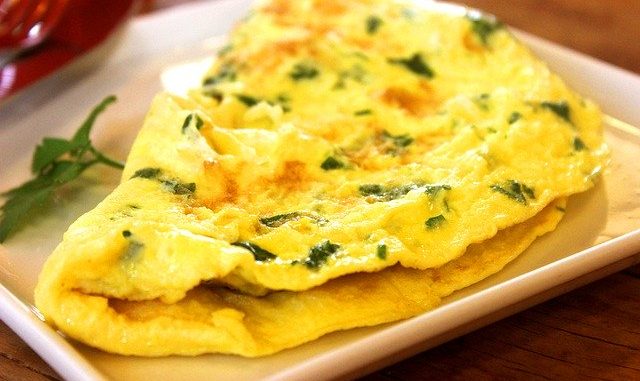
A recipe for one of the greats. One of the first dishes I ever tried in the kitchen was to make a big fluffy omelette. I didn’t even think about the filling it was the idea of trying out a recipe that appealed to me.
The omelette is often made as a scrambled egg and indeed there are a number of variants for this French classic. I do advise though on the idea of a scrambled eggs because it is more than just beating or whisking some eggs and milk together. They are easy to make but I feel some practice is needed to get them just right.
The fillings are too numerous to mention but we will try eventually to place them on this article. Why not try them for breakfast as well as a main meal. It’s also a dish which has global connotations and the range of types is far greater than you can imagine.
Equipment
Purchase an omelette pan if the budget allows it. This is usually an iron skillet or iron pan which tends to be rather heavy. Aluminium pans have been used but the heating medium is at times wayward and can easily burn an omelette all the way through.
That great chef, Elizabeth David who inspired so many cooks in the 50s and 60s wrote in her book ‘French Country Cooking‘ the line that ‘a pan used and kept exclusively for omelettes by a deft cook does not require washing’. It does appear from experience that any omelette when it is prepared properly should come clean away from the pan and once used just wiped with a clean tissue paper as you would with a wok. More advanced versions include that wonderful smoked haddock variant with a hollandaise sauce topping called omelette Arnold Bennett.
[Please note we are an affiliate marketing partner and will make a sales commission if you purchase any items through our affiliate links. Please read our affiliate disclosure]
Essential Equipment
-
- Non-stick Skillet or Frying Pan
- A non-stick skillet is ideal for making omelettes because it prevents the eggs from sticking and allows for easy folding. An 8-10 inch skillet is a good size for a standard omelette.
- Spatula
- A silicone or rubber spatula is best for gently lifting and folding the omelette without damaging the non-stick surface of your skillet.
- Mixing Bowl
- A small bowl for beating the eggs. A bowl with a spout can be handy for easy pouring.
- Whisk or Fork
- For beating the eggs to a uniform consistency. A small whisk or fork works well.
- Measuring Spoons
- To measure ingredients like milk or cream (if using), salt, and any spices.
- Cutting Board
- For chopping any fillings like vegetables, herbs, or meats.
- Knife
- A sharp knife for chopping fillings.
- Grater
- If you’re adding cheese to your omelette, a grater will be needed to shred it.
- Non-stick Skillet or Frying Pan
Ingredients
- 2 large eggs or 3 medium sized eggs
- Pinch of salt and pepper
- 1 tablespoon (tbsp) cold water
- Dash of vegetable oil (sunflower or olive) or a tablespoon of butter to help with the sliding of the omelette in the pan.
Method
- Take your eggs and crack them into a bowl but don’t put them directly into the pan as you need to mix them first!
- Add a teaspoon of water and a pinch of salt and pepper before whisking with a fork until the white and the yolk are fully blended. The egg should become paler in colour because of the level of aeration from bubbles.
- Bring your pan to a high heat and add oil so that the mixture doesn’t stick.
- Pour in your mixture and cook on a high heat for two minutes, making sure that mixture is spread out evenly.
- As the egg begins to set, use a spatula to push the set egg towards the omelette centre.
- Cook the set omelette for another minute, then loosen the edges with a spatula and fold the omelette in half.
- Tilt the pan and slide the omelette onto a warm plate and serve immediately on its own or with a crisp green salad.
Cheese Omelettes
Melting cheeses are the best for this type of recipe. Choose from Cheddar, Gruyere and Swiss cheese. Grate these up and either mix into the ‘batter’ before it is poured or add when the batter is in the pan. Both produce slightly different textures but they help with variety of flavour and mouthfeel.

Leave a Reply